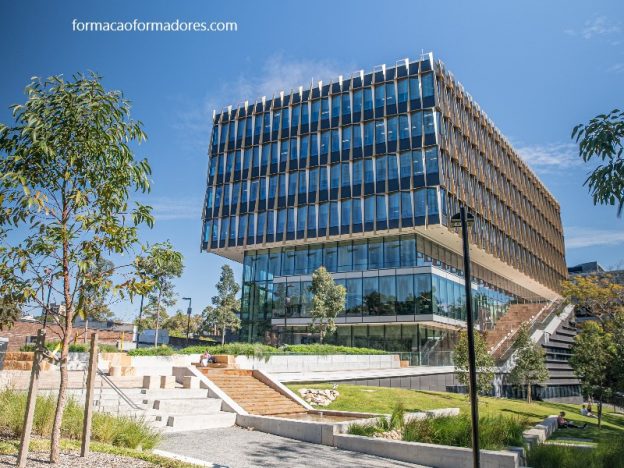The Faculty of Medicine: Shaping Future Healers and Innovators – The Faculty of Medicine: Shaping Future Healers and Innovators
In the realm of higher education, the Faculty of Medicine stands as a beacon of knowledge, compassion, and innovation. It is more than just a faculty—it is a crucible where science meets humanity, forging the next generation of doctors, researchers, and healthcare leaders. As medicine continues to evolve rapidly, the Faculty of Medicine plays a pivotal role in preparing students to face the complex challenges of modern healthcare with skill and empathy.
What Is the Faculty of Medicine?
The Faculty of Medicine is an academic division within a university dedicated to the study and training of medicine and health sciences. Its primary mission is to educate medical students, conduct cutting-edge research, and provide community healthcare services. The faculty serves as the foundation for various medical professions, including physicians, surgeons, medical researchers, and public health experts.
Typically, the Faculty of Medicine offers a comprehensive curriculum covering the fundamental sciences, clinical practice, and ethical aspects of medicine. Students undergo rigorous training involving lectures, laboratory work, clinical rotations, and internships in hospitals or healthcare centers.
Structure and Academic Programs
Most Faculties of Medicine offer an integrated medical education program that spans approximately six years, though the duration may vary depending on the country and institution. The curriculum usually consists of three major phases:
- Preclinical Phase: Focuses on basic sciences such as anatomy, physiology, biochemistry, microbiology, and pharmacology. This phase builds a strong foundation of medical knowledge.
- Clinical Phase: Involves hands-on experience in hospitals and clinics where students learn to diagnose and treat patients under supervision. Clinical rotations cover various specialties like internal medicine, surgery, pediatrics, obstetrics and gynecology, psychiatry, and more.
- Internship/Residency: The final stage where students practice medicine independently but under guidance, gaining deeper insights into patient care and medical decision-making.
Besides the Doctor of Medicine (MD) program, many Faculties of Medicine also offer postgraduate degrees and research opportunities in specialized fields such as cardiology, oncology, neurology, and medical genetics.
The Role of Research and Innovation
Research is a cornerstone of any Faculty of Medicine. Medical advancements, from new diagnostic tools to revolutionary treatments, often originate in university medical faculties. These institutions foster a culture of inquiry, encouraging students and faculty to explore groundbreaking ideas.
Medical research encompasses a broad spectrum: clinical trials, epidemiological studies, laboratory experiments, and public health investigations. Through research, Faculties of Medicine contribute significantly to the global fight against diseases, improve healthcare outcomes, and influence health policies.
Innovations in medical education are also a focus area. Many faculties now integrate technology such as simulation labs, virtual reality, and artificial intelligence to enhance learning experiences and better prepare students for real-world challenges.
Ethical and Humanitarian Dimensions
Medicine is not solely about science and technology; it is deeply rooted in ethics and humanism. The Faculty of Medicine places great emphasis on instilling ethical values in its students, such as empathy, respect for patients’ dignity, confidentiality, and the commitment to do no harm.
Students are taught to navigate complex moral dilemmas they may face in practice, balancing scientific knowledge with compassion. Additionally, medical faculties often engage in community service programs, health outreach initiatives, and global health projects to cultivate a sense of social responsibility.
Challenges and Future Directions
The Faculty of Medicine faces ongoing challenges in adapting to the fast-changing healthcare landscape. The rise of new diseases, technological disruptions, and evolving patient expectations demand continuous curriculum updates and innovative teaching methods.
Furthermore, there is a growing focus on interdisciplinary education, where medicine intersects with fields like bioinformatics, environmental science, and behavioral health. This holistic approach aims to produce versatile healthcare professionals capable of addressing multifaceted health issues.
Another pressing challenge is ensuring accessibility and diversity within medical education. Many faculties are working towards inclusive admission policies and support systems to create a medical workforce representative of the diverse populations they serve.
Impact on Society
Graduates from the Faculty of Medicine go on to become slot depo 10k the backbone of healthcare systems worldwide. Their expertise, compassion, and dedication save lives and improve the quality of life for millions. Beyond clinical practice, many alumni become leaders, educators, and innovators driving progress in medicine and public health.
The faculty’s influence extends beyond hospitals and clinics; it shapes health policies, advances medical knowledge, and promotes health equity. Through collaboration with governments, NGOs, and international bodies, Faculties of Medicine contribute to building healthier societies.
Conclusion
The Faculty of Medicine is a dynamic institution where science, compassion, and education converge. It nurtures the talents and character of future medical professionals who will face the complexities of healthcare with courage and wisdom. As medicine continues to evolve, the faculty remains at the forefront, pioneering discoveries and cultivating a deep commitment to healing humanity.
For anyone aspiring to make a meaningful difference in the world, entering the Faculty of Medicine is embarking on a profound journey—a journey of learning, sacrifice, and ultimately, hope.
